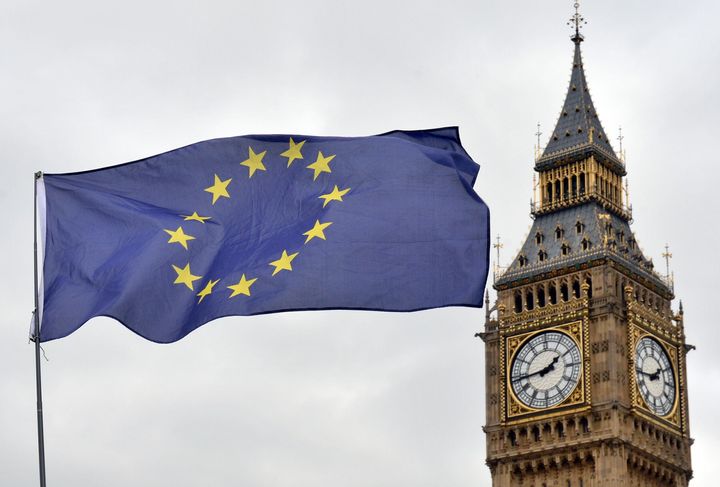
A top-secret analysis of the economic impact of Brexit will be published by the Government – but only when Parliament votes on the final deal agreed with Brussels later this year, Theresa May has pledged.
The Prime Minister’s promise came as Westminster was left reeling by a leaked Whitehall assessment that forecast that quitting the EU would cost the UK up to 8% in lost growth.
The confidential document’s dramatic conclusion was that all versions of Brexit – from a ‘no deal’ scenario to a Norway-style model - would result in Britain losing out.
MPs have demanded that the full study leaked to BuzzFeed News should be published by the House of Commons to let the public see for themselves the secret assessments.
Justice minister Philip Lee became the first minister to break ranks over the leak, saying on Twitter that it raised a “serious question” over whether the UK should go ahead with Brexit at all.
Labour is set to force the Government’s hand with a Commons vote on Wednesday demanding the secret papers be handed over to MPs as soon as possible.
In her first words on the affair, the Prime Minister said that MPs would be “fully informed” of the relevant studies carried out by Whitehall, but only when the time was right.
“When the time comes for Parliament to vote on the final deal, we will ensure that Parliament has the appropriate analysis on which to be fully informed, on which to base their judgement,” she told reporters on her plane to a trip in China.
“But it would be wrong to publish analysis before that analysis has been completed, and it would also be wrong to publish analysis which might prejudice out negotiating position, and indeed Parliament itself has accepted that.”
She even suggested the leak could damage the UK’s negotiating position in its talks with the EU over the shape and nature of Britain’s post-Brexit trade and transition deals.
Critics are bound to seize on her phrase ‘appropriate analysis’, fearing that only the PM’s favoured future trade deal would be assessed rather than other options.
May has already been forced to guarantee Parliament a ‘meaningful vote’ on the final deal hammered out with the EU 27 for future arrangements after a two-year Brexit transition period ends in 2021.
The leaked assessment - titled ‘EU Exit Analysis - Cross Whitehall Briefing’ and dated January 2018 – found that under May’s favoured option of aa comprehensive free trade agreement with the European Union, UK growth will be 5% lower over the next 15 years.
The “no deal” scenario, which would see the UK revert to World Trade Organisation (WTO) rules, would increase the damage to 8%.
The softest Brexit option of continued single market access through membership of the European Economic Area would slow growth by 2%.
The analysis, prepared this month by the Department for Exiting the European Union (DExEU), is due to be presented to key Cabinet ministers in one-to-one meetings this week and will be discussed at a meeting of the Brexit cabinet sub-committee next week.
Following a battle with the Commons, Brexit Secretary allowed MPs last year to publish parts of a hastily drafted version of internal studies on Brexit, but he was roundly criticised for failing to give any detailed “impact assessment”.
Asked if she had read the leaked impact assessment and if she accepted it showed the UK worse off outside the EU under every scenario it tested, May replied that Brexit minister Steve Baker had made clear it would be wrong to claim the document was definitive.
“There is analysis being done. This is very preliminary. What has been seen so far is a selective interpretation of a very preliminary analysis, which ministers have not signed off, have not approved, and which doesn’t actually even look at the sort of deal that we want to deliver in terms of the future relationship with the European Union.”
When asked why the analysis had not included her own ‘bespoke’ deal, she ducked the question. One Brexit Department source had suggested the only reason the document had not been made public was “because it’s embarrassing”.
George Osborne’s former Treasury aide Rupert Harrison backed up the findings of the leaked paper on Tuesday.
“As any economist will tell you, it’s basically impossible to come up with any other conclusion based on standard trade impacts. To the extent there are any valid arguments for Brexit they are almost all non-economic,” he said.
The leaked document showed that every sector of the economy included in the analysis would be negatively impacted in all three scenarios, with chemicals, clothing, aviation, cars and retail the hardest hit.
Every UK region would also be affected negatively in all the modelled scenarios, with the North East, the West Midlands and Northern Ireland facing the biggest drops in economic performance.
The assessment assumed a new trade deal with the United States would be agreed and that it would benefit GDP by about 0.2% in the longer term.
Trade deals with other non-EU countries and blocs, such as China, India, Australia, the Gulf countries and the nations of Southeast Asia would add, in total, a further 0.1% to 0.4% to GDP over the longer term.
